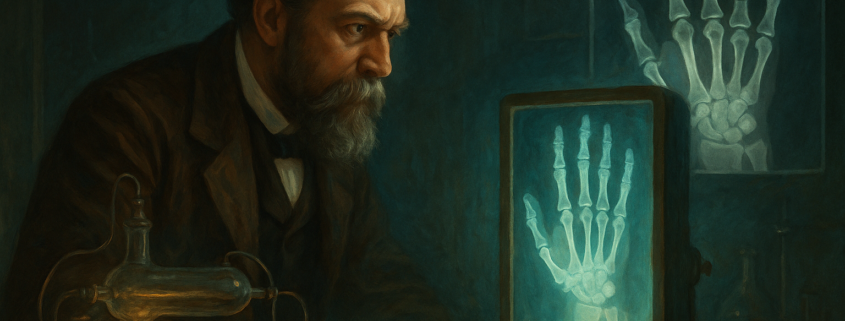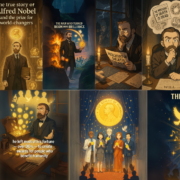Did You Know How X-Rays Discovered!!
The Accidental Discovery That Changed Medicine Forever: Wilhelm Roentgen And The X-Ray
It all began with a flicker in the dark.
It was a cold November evening in 1895. Wilhelm Conrad Roentgen, a German physicist, was alone in his lab, surrounded by wires, glass tubes, and early electrical equipment. He had been experimenting with cathode rays—an invisible stream of electrons inside a sealed glass tube.
He covered the tube in thick black cardboard, expecting all light to be contained.
But then… something strange happened.
Across the room, a fluorescent screen—coated with barium platinocyanide—began to glow.
How could this be?
There was no visible light escaping. The screen should have remained dark. Yet there it was: a soft, eerie luminescence, triggered by something unknown.
Roentgen didn’t panic. He didn’t ignore it.
He got curious.
A New Kind of Ray
Over the next few weeks, Roentgen worked tirelessly in secret. He suspected he had discovered a new kind of ray—invisible, penetrating, and unlike anything known to science.
He called them “X-rays” — the “X” standing for the unknown.
One night, in perhaps the most iconic moment of the experiment, he asked his wife Bertha to place her hand between the mysterious rays and a photographic plate.
When the image was developed, what they saw was astonishing:
“Her bones.!”
“Her wedding ring.!”
“The soft shadow of her flesh — gone.!”
It was the first X-ray image in human history.
Bertha reportedly exclaimed, “I have seen my death!”
The World Reacts
News of Roentgen’s discovery spread rapidly. Within months, X-rays were being used in medicine to locate bullets, diagnose fractures, and explore the human body without surgery.
This discovery revolutionized diagnostics, reducing pain, risk, and uncertainty for millions.
Roentgen refused to patent his invention. He believed it should serve humanity, not profit. For his contribution, he was awarded the first-ever Nobel Prize in Physics in 1901.
The Beauty of Serendipity
Wilhelm Roentgen didn’t set out to invent medical imaging.
He was investigating something entirely different.
But he kept his mind open. He paid attention to what others might have dismissed as a glitch.
And in that moment of unexpected glow, the world gained a new way to see itself—literally.
Final Thoughts
The story of X-rays is more than just a scientific breakthrough.
It’s a reminder that some of the most important discoveries come from the unexpected, the unexplained, and the unintended.
So, the next time something doesn’t go to plan, pause for a moment.
You just might be standing at the edge of your own accidental genius.
Want to see this story come to life in 60 seconds?
Watch the animated YouTube Short:



 curio science quest
curio science quest
Leave a Reply
Want to join the discussion?Feel free to comment!